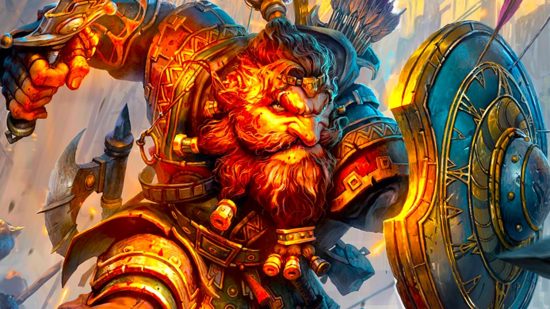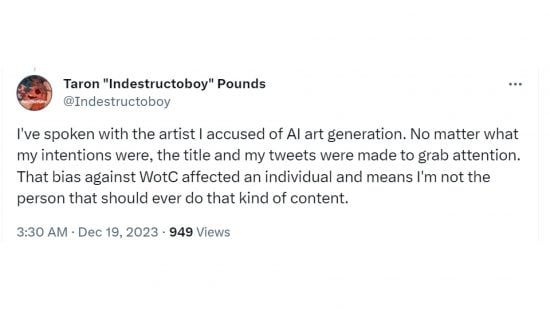Wizards of the Coast has responded to accusations that an upcoming DnD book features AI art, confirming that “no generative AI was used”. The statement was posted on D&D Beyond’s Twitter on December 18, after a Dungeons and Dragons YouTuber made claims about a particular image from the 2024 Player’s Handbook (credited to Nestor Ossandón).
“We became aware of community concerns that generative AI was used in an art piece we recently teased”, Wizards of the Coast writes on Monday. “We confirmed with the artist that no generative AI was used, which is consistent with our artist guidelines restricting it.” “We’re happy with the artwork and hope you enjoy it as much as we do”, Wizards adds.
The concerns about Ossandón’s work appear to stem from D&D YouTube – primarily from Indestructoboy (Taron Pounds), whose content focuses on tabletop RPGs. The original video has been deleted, but Pounds shared a video titled ‘I screwed up’ on December 18 addressing the situation (see below).
“I’m incredibly sorry about what happened”, Pounds says. “If I had just looked into who the artist was who did the piece originally, I would have seen somebody that has a long track record of proven quality work in the industry, and I could have ended it right there and not affected anyone.”

As well as DnD books, Nestor Ossandón has provided art for a range of MTG sets, including the recent Lost Caverns of Ixalan. Christian Hoffer of Comicbook reached out to Ossandón after the initial accusations, and the artist confirmed “I do not use artificial intelligence (NOT AI) for my work”. Hoffer shared Ossandón’s response via Twitter on Monday.
“That image is completely painted”, Ossandón reportedly told Hoffer over email. “It is one of my favorite recent jobs that I have been able to do.”
Ossandón shared several in-progress images of the accused art piece with Hoffer, saying: “This character is completely painted from scratch with a gray and superimposed color technique. Then I paint the cold tones to give atmosphere and light.” “It took me more than two weeks and my director was very happy with this work”, Ossandón added.
After posting the apology video, Pounds shared a tweet stating he had contacted Ossandón. “The video has been deleted, and he was so kind about the situation that it really just drove home how carelessly I handled this thing.” Further tweets from Pounds state “That bias against WotC affected an individual and means I’m not the person that should ever do that kind of content”.
Pounds may not be the only creator in the D&D community that shared incorrect information about Ossandón’s work. Monday also saw TTRPG streamer TheHypeGoblin (Sara Roberts) tweet in response to Hoffer.
“I made a post based on what my knowledge of the telltale signs of AI art are and I was wrong”, Hoffer writes. “After listening to the folks involved and other artists who’ve weighed in I’ve taken down my original post. I’m sorry for any distress I’ve caused, I’ll do my utmost to be more thorough in the future before making posts of this nature.”
AI art was found in a Dungeons and Dragons book (Glory of the Giants) back in August. This prompted Wizards of the Coast to revise its art policies to “make clear that artists must refrain from using AI art generation as part of their art creation process”.
For more on artificial intelligence, we spoke to several RPG publishers about the Pandora’s Box that is AI art. To learn more about the book Ossandón’s work features in, here’s everything we know about the upcoming One DnD rulebooks.



